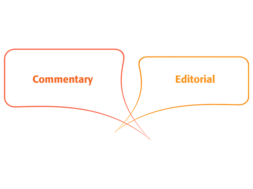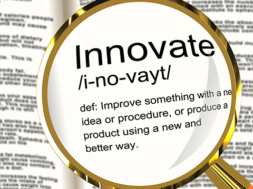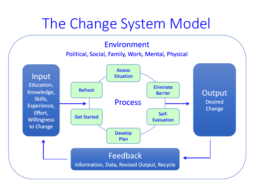
Leading the Way – How Career Colleges can be the Hero
By Dr. Jean Norris, Chairman of the Board, Association for the Advancement of the College Admissions Profession (AACAP)
Is anyone else feeling a bit exhausted?
It’s natural to feel this way given years of fighting against lawsuits and public attacks; validating a career college education; and simply surviving given the strain on resources to protect the college while trying to serve students. It would be easy to give up; but from what I’ve seen, that’s not in the DNA of those who serve in the career college sector. I can almost hear the lyrics of Bon Jovi’s “We Weren’t Born to Follow” as a battle cry inspiring many to never give up, keep fighting and lead the way.
It seems the career college sector has the first part covered with a renewed positive outlook and a few wins, but I’d like to suggest more than just playing defense. What if the career college sector took the lead with best practices for all sectors of higher education to follow? And what better place to start the revolution, than examining the existing threats and opportunities in the admissions function? Let’s start by exploring an angle that many may not have considered.
Expand your defense
Vendors: friend or foe?
Ensuring your marketing and admissions functions are in legal compliance is a given, but there is another area that warrants attention.
One only has to look at the actions of some of the vendors working in the career education space as a lightning rod for some of the past problems.
With all the rules and regulations imposed on schools and colleges, who’s watching over the companies who sell their products and services to these institutions? Unless they are reeled in, some of these vendors remain a potential source of future trouble for colleges, too.
One could argue that some of the original lead vendors were to blame for the reputation problems in the career education sector. Take for example the rush to the pay per lead (PPL) model of inquiry generation. Vendors pounced on the opportunity to sell volumes of low quality leads to schools and colleges and the marketing managers were more than happy to play along. Why? Because they saw everyone else jump on the bandwagon and the volume of inquiries per dollar were so much more affordable than other lead sources.
The result? Well, bad business practices emerged. Since these inquiries were of low quality, admission professionals had to spend an increased amount of their time trying to even get in touch with these people and when they did, they found some didn’t even inquire about college. And then the vendors decided it would be a good idea to not just sell these inquiries to one school/college but to several at the same time who had similar programs or campus locations. So now these inquiries were getting multiple calls a day from not just one institution but from 3 to 4 different ones. A study conducted by the Government Accountability Office (2010) documented that one of their agents posing as a prospective student received 180 phone calls in a month (average of 7.5 calls per day). Perhaps this is why consumers viewed this as desperate and a trust-breaking activity.
The need to improve conversion rates further exacerbated bad behavior. The admission representative’s performance was typically measured by the number of dials, number of contacts, number of set appointments, conversion rates to prospective students who actually showed up and then ultimately enrollments.
Given the poor quality of these inquiries, how do you think this impacted the performance of the admissions professional? You bet. Contact and conversion rates were dismal!
Some people lost their jobs; others stepped up their activity to try and meet past standards of performance, so they dialed MORE; left MORE messages; the pressure built and built and built and when they finally got a prospective student on the phone or face-to-face, you can bet there was an incentive for not letting them get away easily. Could this have pushed some over the edge to use high-pressure sales tactics?
Fast forward to Obama-era regulations on career colleges and the awareness of consumers to some of these practices and guess what? Decision-makers became aware that the low, quality/high volume of inquiries wasn’t such a great deal after all. But the vendors had already made their money, and their companies got rich. Some companies are on to the next big thing leaving the schools they “served” to pick up the pieces. Some brave colleges began to turn their back on these vendors, and yet others couldn’t get off the volume diet all at once. In fact, some schools are still buying this sales pitch, and the vendors are more than happy to sell them.
Language changes
Although there are several vendor-partners doing the right thing and providing meaningful resources for schools and colleges, some are not doing enough. For example, Stephen B. Friedheim (2005) challenged those working in the career college sector to work on language changes. Those words of wisdom were intended for vendors as well. He stated:
“Words are so powerful in what they describe; the image that they leave; or, the symbolism that they represent. Using them correctly is essential to understanding what they are attempting to convey. The selection of words is even more insidious when used by others to paint an odious picture.”
“Encouraging the media to be more up-to-date and use less derogatory terminology won’t be easy. Habits are hard to break. Having been interviewed and quoted hundreds of times, I can appreciate the challenge that this phraseology represents. But we need to do it. The language of description won’t change unless we take an active role in changing it.”
A full 12 years later, Friedheim’s advice hasn’t fully taken hold. Take for example a recent advertisement from a vendor in the higher education space for a webinar to help your admissions team improve their conversion rates. While the concept of improving performance is worthy, the content of this training eluded to high-pressure selling techniques and the use of the Take Away Close. Seriously?
Continued bad practices
In case you aren’t familiar with this sales strategy, the Take Away Close is a technique described as something similar in nature to the Hard Close Technique. Using the Take Away Close to suggest canceling the opportunity to buy (enroll) as a last-ditch effort to close a sale. It’s also important to note that techniques of this nature were showcased as evidence against career colleges in Senator Harkin’s trials as well as the Government Accountability Office (GAO) study that nearly toppled the sector (2010). This particular technique is further described by Phelps (2017) as:
“If your customer is really struggling to move forward, making a suggestion that they may not be ready to acquire your product and that they may want to consider either ‘getting by’ or considering a ‘cheaper alternative,’ may just spur them to buy. What happens is that when your customer senses that you are not going to sell them what they want, they often get more aggressive with their pursuit. This works much like the old expression that ‘people want what they cannot have.’ If your customer doesn’t think that they can own your product because you may not sell it to them, they often want it more.”
And if you need a visual of this unethical technique, just Google the Frontline documentary, A Subprime Education, from 2016 when the Take Away Close was, unfortunately introduced to a national audience as a technique used by career colleges. There’s also a 2012 video of a for-profit college recruiter referencing the “Pain Funnel” in a video supporting Senator Harkin. Do we really want to go back to this time in history?
If this wasn’t enough, there are also the vendors who claim to be selling exclusive inquiries when in fact; they are selling them to several schools and colleges.
In a recent study by Norton Norris, Inc., of the top 12 Lead/Inquiry generation vendors, it was discovered that based on budget caps and timing, some vendors were sending inquiries intended for one school to other schools and colleges. Even when region, program and demographic fit clearly were a match for the school/college, nearly 50 percent of the time the inquiries were shifted to another school. In fact, 40 percent of the inquiries submitted were never delivered to the school paying for the service!
In fact, some of the evaluators who inquired to the select college actually received phone calls regarding gift card sweepstakes, financial aid offers and were contacted by schools other than the one who commissioned this study.
Vendor standards of practice
So what can be done to protect a college from the bad and unethical behavior of some of these vendors? It’s scary to think that the responsibility for this isn’t within the purview of accrediting agencies or even member organizations. So perhaps we can learn from the world of banking that recently went through a similar situation.
In an article addressing what they term the “Wild West of vendor management,” the authors recommend setting an industry standard requiring a qualitative approach that goes beyond traditional metrics (Sicuranza, C. & Shiery, J., 2013). This “standard would provide guidelines with a uniform vocabulary that can be used to develop comprehensive vendor management programs as well as industry (sector) benchmarks.” They further recommend “including formal and informal customer complaint analysis, social media monitoring and secret shopping.” The authors even go on to recommend self-policing, self-reporting and proof that vendors are not engaging in practices that could harm the consumer.
Consuelo Esparza, Vice President of Marketing and Assessment at Norton Norris Inc., goes on to say, “Ultimately, schools are liable for offers and statements made by the vendor. If lead/inquiry vendors must remain a part of the mix, mystery shop them to keep them honest and manage them diligently.” In addition, Esparza provides the following practical tips:
- Track the number of voice to voice calls you have with the inquiries from each vendor – remember, if you never talk to the prospect you can’t invalidate them (which means you can’t get a refund)
- Consider asking your vendor for exclusive, non-call center inquiries
- Ask your vendor to explain and detail how many inquiries come from student-generated form submissions; call centers; or warm transfers
- Finally, consider going to a marketing mix that uses traditional media to drive traffic to your digital properties. A well-balanced advertising mix will fuel your organic website inquiries and your PPC inquiries. Changing the mix of inquiries will result in driving up contact rates, with a smaller staff. Ultimately, you’ll increase enrollments and reduce cost
But beyond protecting your organization from bad actors, comes taking the lead in the broader higher education sector. Let’s take a look at some of the amazing opportunities waiting!
Taking the lead
The opportunity
One of the best strategies to take a leadership position is to fill a meaningful void. In scanning the higher education landscape, the most relevant opportunity can be found in career and college advising.
According to a recent study (NACAC, 2017), only 28 percent of public high schools employed a counselor dedicated to providing college counseling.
In stark contrast, 49 percent of private schools provided this service to their students. But a more alarming statistic is the amount of time counselors have to spend on postsecondary counseling. In 2016, public school counselors averaged 20 percent of their time on this important task while private schools ranked a bit higher with a 31 percent allocation of their time on college counseling.
The lack of resources dedicated to this important task is understandable when considering the enormous responsibilities of the high school counselor. Many counselors spend their time with students on the scheduling of high school courses, personal needs counseling, academic testing, and job placement. The rest of their day is consumed with administrative duties and meetings.
Additionally, the professionals who provide career guidance have been charged with broadening the scope of what postsecondary education looks like. According to a Harvard study (2011), a narrowly defined “college for all” goal – one that does not include a much stronger focus on career-oriented programs that lead to occupational credentials–seems doomed to fail.” The authors note that “middle-skill” occupations such as electrician, and construction manager, dental hygienist, paralegal and police officer pay a significant premium over many jobs open to those with just a high school degree.”
In contrast, when examining the business model of the typical career college, substantial resources are dedicated to the admissions department. The marketing engine churns to feed inquiries to a dedicated group of admission professionals responsible for scheduling appointments, meeting with students and converting them into enrolled students. Career colleges also reached a much broader audience than high school students. They serve transfer and adult students who have no guidance services at all. So yes, career colleges have much needed resources – admission personnel available to assist prospective students of all ages.
There are a couple of tweaks to the business model that can maximize these resources, too. The current business model includes an outdated value proposition and metrics that are no longer as meaningful given how students experience their college search. In other words, a prospective student who inquires today may have been doing their own research for months and is ready to enroll however they also may have just begun their exploration. Holding admission professionals responsible to convert these inquiries to an immediate enrollment may not align. Expecting immediate conversion from inquiry to enroll may be a disservice to the student and create unwanted behaviors from admission staff.
Change the value proposition
For decades, the motivation for prospective students to visit a college and meet with an admissions advisor was to get information. Pure and simple, the prospective student had questions, and the only person who had the answer was the admissions professional. The conversion of scheduled appointments to prospective students showing up for their appointment is a metric that is still measured today.
Most people will tell you that today’s conversion rate of scheduled appointments to appointments held ranges from 40 percent to 60 percent. Even though over 50 percent of prospective don’t show up, this measurement is deemed acceptable. The reality is that most everything a prospective student ever wanted to know about a college or program is available on the internet. This has made the value proposition of getting information by scheduling an appointment an outdated practice. So why do career colleges still subscribe to this philosophy?
For one thing, there is evidence that spending time on campus or speaking to an admission professional makes a difference for some prospects.
Consider that a longitudinal study of 23,000 high school seniors showed a 3.2 times more likelihood to attend college when connecting with a college counselor (NACAC, 2017).
But one has to look beyond the simple act of meeting with someone. This isn’t just a function of a visit; it’s also about the context of what is done between the counselor and the student.
Arguably career college admission personnel devote a substantial amount of time in meeting with a student to discover their goals and help them navigate the admissions process. This is admirable, but it’s not enough. You see, college counselors are non-bias facilitators of knowledge and discovery for a student. They are trained to provide meaningful discovery through counseling, coaching, providing resources, guiding experiences, and offering proven assessments. They decipher all the data points to help a student understand their best fit. The knowledge, skills and abilities go way beyond what the career college admission professional has done in the past, so more training and education is needed within the scope of this role.
Once the training (and perhaps credentialing) of the admissions professional is proven, private institutions of higher education can expand on their value proposition. Why not offer this new, expanded service as a perk that comes with being labeled “private”? Instead of battling over terms such as non-profit and for-profit, shift the dialogue to showcase the advantages of a private school/college to include this service.
Joining forces
Recently a 501(c)(3) organization was formed by a diverse group of experts in higher education, legal, credentialing, accounting, non-profit operations, college/school counseling, admissions, and marketing to assist in this very initiative. At a time where meaningful student outcomes in higher education are essential to the student, college, employers and the community at large, The Association for the Advancement of the College Admission Professional (AACAP) fills a gap in professional development for any admission professional working in career education at the high school or college level (forget the labels of for-profit and non-profit). The tremendous focus in career and technical education occupations coupled with the shortage of counselors at the high school level create a need for greater collaboration amongst admission professionals, high school counselors and institutions serving students (of all ages) interested in career education.
About AACAP
The Association for the Advancement of the College Admissions Profession (AACAP) seeks to become the leading organization for admission and counseling professionals serving students pursuing career education.
Specifically AACAP seeks to:
- Unify individuals that work in the advisement of students in postsecondary education including high school counselors, guidance professionals, and admission professionals working in career, technical and vocational schools, along with community colleges, colleges and universities
- Serve to increase knowledge and skills among admission officers and counseling professionals
- Establish and grow leadership among those in the college counseling and the admissions profession who work in career, technical and vocational education
- Supplement the tremendous shortage of high school counselors by equipping post-secondary admission professionals with enhanced knowledge and skills that will assist prospective students
- Build meaningful collaboration amongst high schools and post-secondary higher education institutions
Contact us at advancingadmissions.org
Conclusion
In summary, career colleges must take the necessary steps to eliminate bad practices and proactively take ownership to adapt business practices to align with desired behaviors. It’s essential to work with vendors who support the sector in a healthy way and simply stop doing business with those who promote outdated or harmful services and products. Vendors also have to do their part in keeping others honest for the good of the entire sector.
The opportunity to take a leadership position is in direct correlation to serving an obvious and vital need – NOW. Career colleges are uniquely positioned to provide meaningful college counseling to a population that needs this service more than any other. The lack of college advising services for adult populations is clear, and the shortage of those who can assist high school students is proven. To do this ethically and effectively will take education, training and even licensure for those in the admissions profession. For validity, the input of others outside of career education is essential, too.
As the career college sector repositions and reallocates resources in these areas, they will not only protect themselves from future attacks but also fill a void that will become the model for others to follow.
References
Association for the Advancement of the College Admissions Profession (AACAP) (2017). Mission Statement. Advancingadmissions.org
Friedheim, Stephen B. (Jan 2005). Language of Respect. Career Education Review.
Frontline (2016). A Subprime Education. Accessed November 5, 2017 at https://www.pbs.org/wgbh/frontline/film/a-subprime-education/
National Association for College Admission Counseling (2017). 2017 State of College Admission.
Norton, Vince (2017). Bad News – Beware of Buying Education Leads from Vendors. Accessed November 5, 2017 at https://nortonnorris.com/bad-news-beware-buying-education-lead-vendors/
Phelps, Thomas (2017). The Take-Away Closing Technique. The Balance.
Sicuranza, Christopher & Shiery, Jonathan (2013). Banks Need Industry Standards for Managing Vendors. Accessed October 23, 2017 at https://www.americanbanker.com/opinion/banks-need-industry-standards-for-managing-vendors. American Banker.
Symonds, William & Schwartz, Robert (2011). Pathways to Prosperity. Harvard.
United States Government Accountability Office (August 2010). For Profit Colleges: Undercover Testing Finds Colleges Encouraged Fraud and Engaged in Deceptive and Questionable Marketing Practices.
DR. JEAN NORRIS is the leading advocate and expert for the admissions profession. Her unique mix of experience working in the enrollment trenches, consulting for hundreds of organizations and training thousands of professionals makes her a sought after speaker and presenter. Her research, articles, and interviews can be found in many well-known publications serving the sector.
She began her educational pursuit in a 10-month medical assisting diploma program and went on to earn a B.A. in Management from National Louis University; a M.A. in Communication and Training from Governor’s State University and an Ed.D. in Organizational Leadership from the University of Sarasota. Jean is also a Licensed Master Neurolinguistic Programming Practitioner.
In her 30 year, higher education career, Jean served in the role of admissions representative, dean of admissions, faculty member, academic dean, vice president of marketing, vice president of enrollment, and vice president of organizational development at private colleges and universities. Currently Jean is a managing partner at Norton Norris, Inc., a Chicago-based marketing/consulting/training firm focused exclusively in the higher education sector. Dr. Norris also serves as the Chairman of the Board for the Association for the Advancement of the College Admissions Profession (AACAP).
Jean is the developer of EnrollMatch® – a comprehensive admissions training program offering proven results to balance compliance and performance. In 2015, Dr. Norris launched MyGuidance Coach® (MGC), a patent-pending student software system that provides pre-enrollment advising for prospective students 24/7 and significant ROI for schools!
Dr. Norris serves as an executive board member for the Juvenile Diabetes Research Foundation (JDRF). Jean and her son, Mike, authored and published their first book “No Sugar Added – Straight Talk From Those Living With Diabetes” with all proceeds to benefit JDRF in their search for a cure. The International Independent Publishers Association awarded their book with a bronze medal from amongst hundreds of titles submitted from 16 countries.
Contact Information: Dr. Jean Norris // Managing Partner, Norton|Norris, Inc. // Chairman of the Board, Association for the Advancement of the College Admissions Profession (AACAP) // 312-262-7400 // Jean@nortonnorris.com or jnorris@advancingadmissions.org // http://nortonnorris.com and advancingadmissions.org // Social Media: Twitter: @drjeannorris; LinkedIn: https://www.linkedin.com/in/jean-norris-ed-d-bb74455








